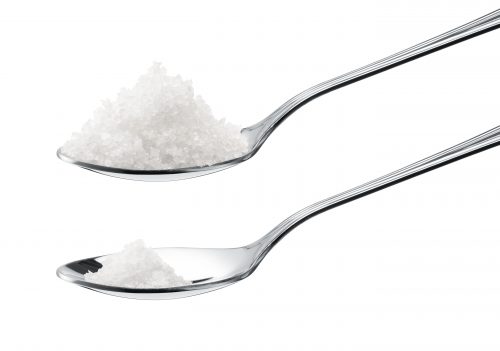Health concerns around food high in sugar and salt have been well documented; with a government review saying tougher action is needed to help the fight against obesity and diseases such as type 2 diabetes which are not only taking their toll on the health of the population, but also the economy.

Last May, Public Health England (PHE) published its first-year progress report of the sugar reduction programme which challenged the food industry to achieve a 20% reduction by 2020, in the nine food categories that contribute the most sugar in the diets of children. The report found that the food industry has made progress but had still fallen short of the 5% it had been targeted at.
Similarly, when PHE revealed its salt targets report for 2017 at the end of last year, it found that while steady progress had been made, the food industry – especially in the out of home sector – was falling behind.
The salt targets were set by the government in 2014, with companies asked to meet average and maximum targets for salt content per 100g, with the maximum targets ranging from 0.13g in canned vegetables to 3.75g in curry pastes. The foods covered by the programme provide more than half the salt in the nation’s diet.
The figures were mixed. For retailers and manufacturers (the in-home sector), the reported said:
– Just over half of all average salt reduction targets were met, with retailers making more progress than manufacturers;
– All average salt targets were met in nine food categories, including breakfast cereals and baked beans however meat products met none; and
– Four in five foods had salt levels at or below the maximum targets set.
In addition to the targets set for all industry sectors across the 28 categories, the out of home sector was also set maximum per-serving targets in 11 food categories, including sandwiches, pasta dishes, and children’s meals.
The report shows:
– Seven in 10 foods did not exceed maximum targets; and
– Salt levels are generally higher in out of home products, compared to in-home
Clearly, the food industry has much still to do to help improve the state of the nation’s health and try and ease the burden on an already stretched NHS.
As Tim Rycroft, Food and Drink Federation Director of Corporate Affairs said after the PHE sugar reduction report was published last May: “Food and drink manufacturers are fully engaged in this ambitious programme. PHE themselves recognise that this is an early assessment of progress and that these are the results of just the first year of a four-year programme. This is a long-term commitment – companies need time to reformulate their products and any restrictions which would prevent them from communicating these changes effectively with adult consumers would undermine the work they are currently engaged in.”
We completely agree with this, which is why Sleaford Quality Foods has been busy reviewing its full Chef William range of blends in an effort to further renovate the amounts of salt and sugar while not compromising on taste and quality.
Sleaford Quality Foods’ Chef William range specialises in dried and dehydrated ingredients, offering over 1,200 products for both the food manufacturing and catering industries from herb and spice pots to soups, gravies and bouillons.
We believe that the food industry has to do more to reduce salt and sugar and we take our responsibilities very seriously in this area – as do our clients. We are in the process of reviewing our entire Chef William range to identify areas in which try and push forward these reductions without losing any of the quality that the range has become synonymous with. The aim is to deliver sugar and salt levels below the March 2018 recommendations from Public Health England.
Every food producer has responsibility for improving the health and wellbeing of UK consumers, our renovation programme is just one way in which Sleaford steps up and delivers our contribution – we trust others will follow.




Comments are closed.